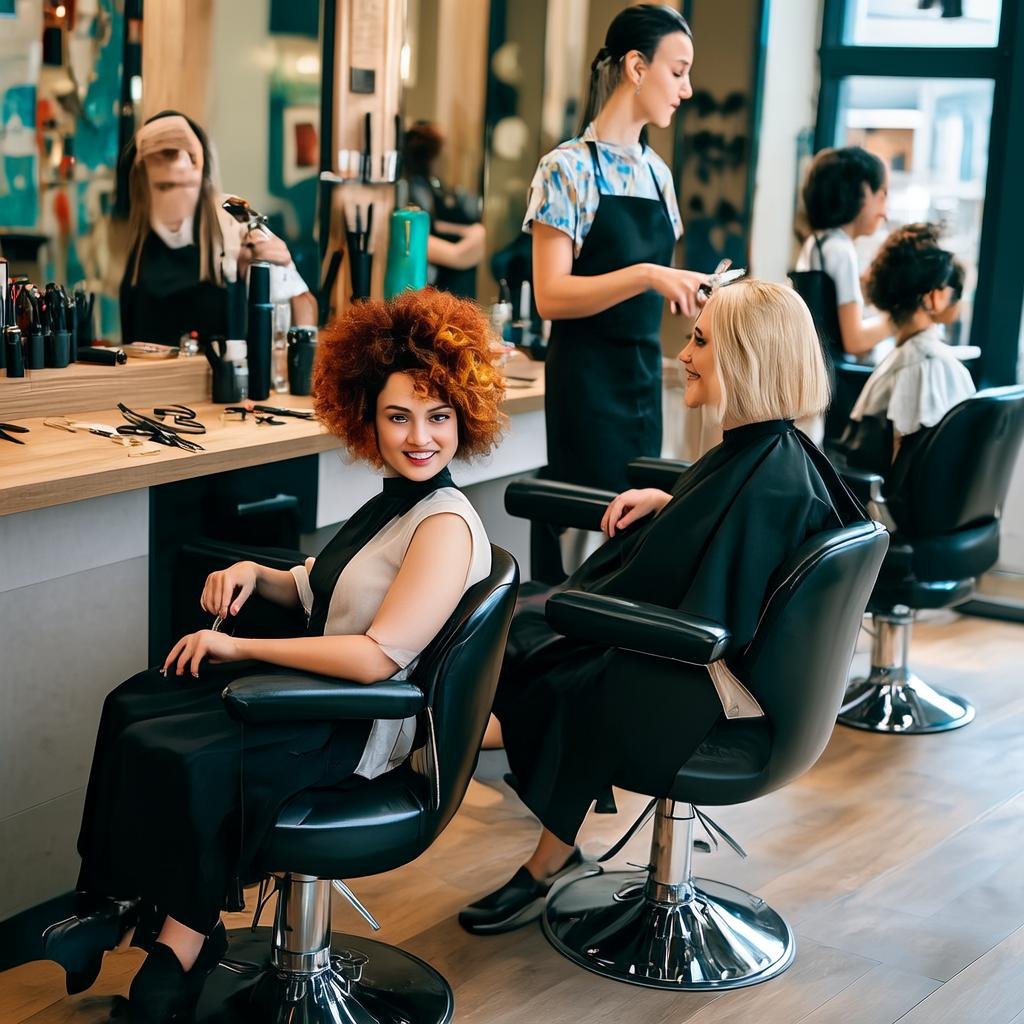The Art of the American Hair Salon: Where Creativity Meets Commerce

Content
Walk into any American hair salon, and you’ll likely encounter a symphony of activity: the gentle hum of blow dryers, the rhythmic snipping of scissors, and the animated conversation between stylist and client. But beyond these familiar sounds lies a world where artistry and entrepreneurship collide, creating spaces that are equal parts creative sanctuary and small business empire.
From Craft to Career: The American Salon Tradition
The modern American hair salon has evolved far beyond its humble beginnings. What started as simple grooming services in the early 20th century has transformed into sophisticated beauty destinations where skilled artisans practice their craft while navigating the complexities of retail business management.
Today’s successful salon owners are Renaissance figures – part artist, part entrepreneur, part therapist. They must master the technical skills of cutting and coloring while simultaneously managing inventory, staffing, marketing, and customer service. This unique blend of creative and commercial acumen has created a distinctly American business model that’s both art and science.
The Creative Canvas
Every client represents a blank canvas, an opportunity for artistic expression that can transform not just appearance, but confidence and self-perception. Master stylists spend years perfecting their craft, learning to read face shapes, understand color theory, and develop an intuitive sense of what makes each individual beautiful.
The artistic process in a salon setting is collaborative and deeply personal. Unlike gallery art or fashion design, hair artistry exists in the intimate space between creator and subject. Clients become co-creators, sharing stories, dreams, and insecurities alongside their aesthetic preferences. This human element transforms routine haircuts into moments of connection and self-discovery.
The Commerce Equation
Yet for every artistic vision, there’s a bottom line to consider. Salon owners must price their services competitively while ensuring profitability. They navigate seasonal trends, manage product lines, and compete with both independent stylists and corporate chains. The best salon operators understand that their business success enables their artistic freedom – quality tools, continuing education, and beautiful spaces all require sound financial management.
The rise of social media has added another layer to this equation. Today’s salon artists must also be content creators, showcasing their work online to attract new clients while building personal brands that can command premium pricing.
Community Hubs and Cultural Spaces
American hair salons have long served as unofficial community centers, particularly within specific cultural groups. From the political discussions that flow freely in barbershops to the multi-generational relationships built in family salons, these spaces often become integral parts of neighborhood social fabric.
This community aspect adds another dimension to the salon’s dual nature. Owners must balance their role as business professionals with their function as community anchors. They become confidants, advisors, and sometimes even informal counselors – all while maintaining professional boundaries and protecting client privacy.
Education and Evolution
The hair salon industry’s commitment to continuing education reflects its artistic ambitions. Master stylists invest significant time and money in advanced training, attending workshops, and experimenting with new techniques. This culture of learning keeps the artistic side of the business fresh while ensuring that technical skills remain current with evolving beauty standards and product innovations.
Many salon owners also become educators themselves, teaching the next generation of stylists and coloring the industry with their unique perspectives and techniques. This mentorship aspect bridges the gap between pure artistry and practical business knowledge.
The Future Salon
As American beauty culture continues to evolve, so too does the salon model. Modern salons are incorporating wellness services, embracing sustainable practices, and adapting to changing consumer preferences for personalized experiences. Technology integration, from booking apps to virtual consultations, is reshaping how artistic services are delivered and experienced.
Yet the fundamental equation remains unchanged: talented individuals must balance creative expression with commercial viability to build sustainable businesses. The most successful operators understand that their artistic integrity and business success are not opposing forces but complementary elements of a larger vision.
Where Art and Commerce Converge
The American hair salon represents a uniquely entrepreneurial approach to creative work. It’s a space where artistic license meets market demands, where personal relationships drive business success, and where the simple act of cutting hair becomes a complex dance of creativity and commerce.
In an era where many creative professionals struggle to monetize their talents, salon owners offer a compelling model of how artistry and business acumen can coexist and thrive. They prove that when creativity meets commerce in the right environment, with the right skills, the result can be not just financial success but genuine artistic fulfillment and community impact.
The next time you sit in that familiar salon chair, consider the complex ecosystem you’re experiencing – where scissors and spreadsheets, creativity and commerce, all come together to create not just a new hairstyle, but an entire way of doing business that’s beautifully, unmistakably American.
